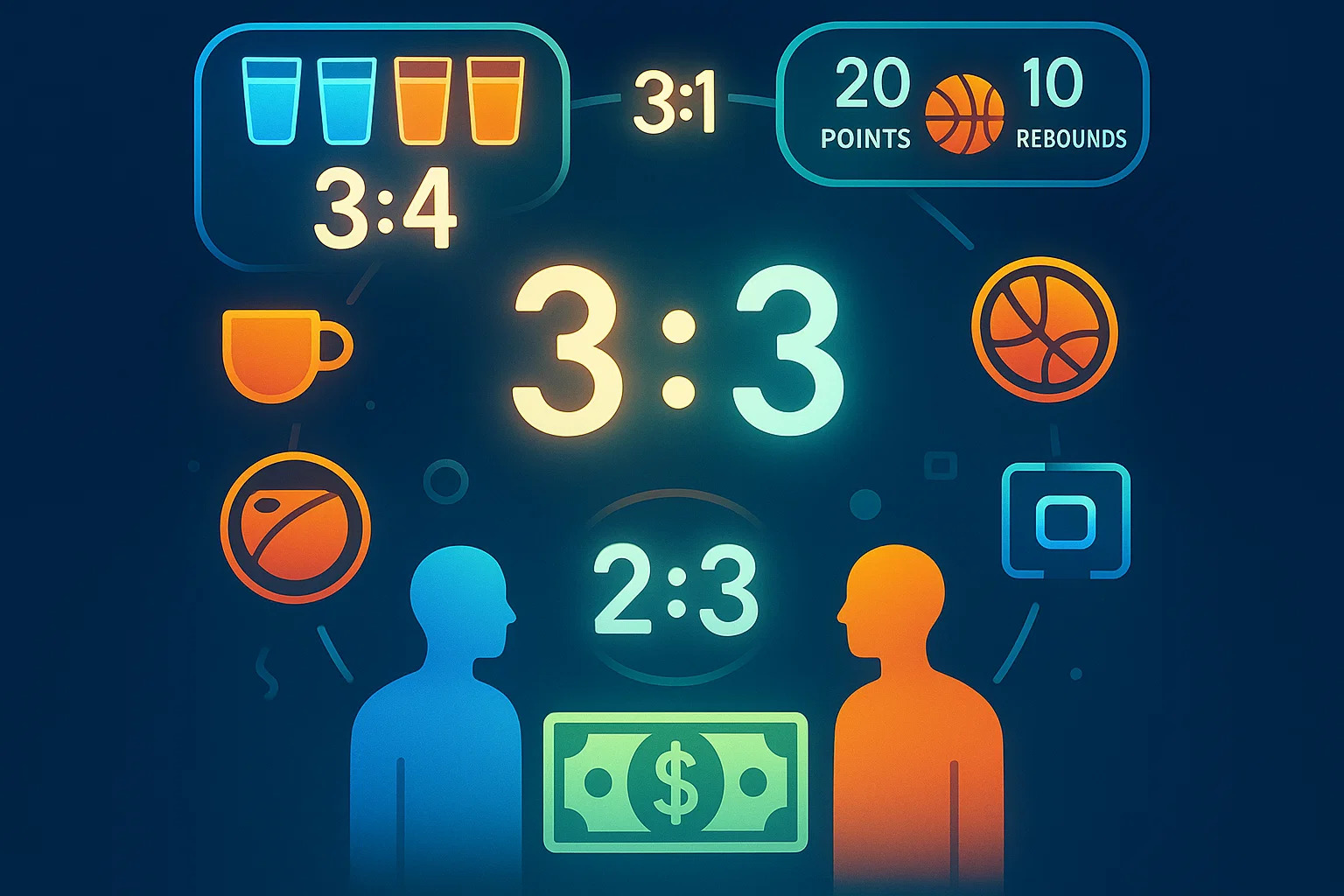Ratios in Pairs
A two-number ratio is just a simple way to show how one thing compares to another. If someone says the ratio is 3:4, it might mean three cups of water for every four cups of juice in a punch recipe, or three hours of study for every four hours of sleep before an exam (not recommended, by the way).
Ratios like this show up everywhere without us even realizing it:
-
Splitting costs: Two friends share a $100 bill, but one ate more, so they agree on a 2:3 split.
-
Sports stats: A basketball player scores 20 points for every 10 rebounds — a 2:1 ratio.
-
Scaling a photo or design: Keeping width and height in the same ratio so it doesn’t look stretched.
They’re one of those little bits of math that sneak into everyday life. A two-number ratio doesn’t just tell you the numbers — it shows the relationship between them, which makes it easier to keep things balanced, fair, or properly scaled.

Breaking Down a Two-Number Ratio
Simplifying a ratio is basically about making it as easy to read as possible. Most of the time, that just means reducing the two numbers until they can’t get any smaller while still keeping the same relationship.
Here’s how it works step by step:
-
Start with your two numbers.
Let’s say you’ve got40and60. -
Find the greatest common factor (GCF).
Both40and60can be divided by20. -
Divide each number by that factor.
40÷20=2and60÷20=3.
The simplified ratio is 2:3.
Ratios don’t always have to stay as whole numbers, either. You can write them as:
-
Fractions (2/3) if you’re solving math problems,
-
Decimals (0.66) when precision matters, or
-
Percentages (40% to 60%) when you want to show a clear split.
Here’s a real-life example: two roommates decide to split a $120 grocery bill based on how much they ate, in a 2:3 ratio.
-
Add the parts together:
2+3=5. -
Each part is worth
120÷5=24. -
First roommate pays
2×24=48. -
Second roommate pays
3×24=72.
The math is simple, but it saves arguments — and a calculator makes it even faster.
Ratios in Motion
Back in the 1992 Summer Olympics, British runner Linford Christie made headlines not just for winning gold in the 100-meter dash, but for how he paced himself. Analysts noted that during his semifinal and final heats, his split times stayed nearly identical — improving by a steady 5:4 ratio between his first 50 meters and last 50 meters.
That consistent pace wasn’t just coincidence. Coaches often train sprinters to keep their energy output balanced, so their acceleration and top speed line up proportionally across each segment of the race. Christie’s near-perfect ratio helped him finish strong when others burned out too early.
Ratios like this show up in more places than we realize — from world-class sports to everyday life. They’re not just numbers on paper; they can reveal patterns, highlight efficiency, and even help explain why someone crosses the finish line first.

Other Handy Tools
Sometimes a two-number ratio is all you need. But other times, the math can get messy — like when you’re working with three values, trying to turn ratios into percentages, or scaling something way up or down. That’s when it helps to have a few extra tools on hand:
-
Ratio Calculator: A go-to for any kind of ratio, whether you’re simplifying, scaling, or comparing values.
-
Ratio of Three Numbers Calculator: Perfect when there’s a third value in the mix and you don’t want to do the heavy lifting by hand.
-
Math Calculator: Converts ratios into fractions, decimals, or percentages without any guesswork.
-
Percentage Calculator: Turns ratios like 2:3 into clean percentages — handy for reports, invoices, or just making numbers easier to read.
These tools can turn a job that would take minutes (and some scratch paper) into something you can solve in seconds. Whether you’re splitting a bill, budgeting for a project, or resizing something for work, they make sure your math stays quick and stress-free.

